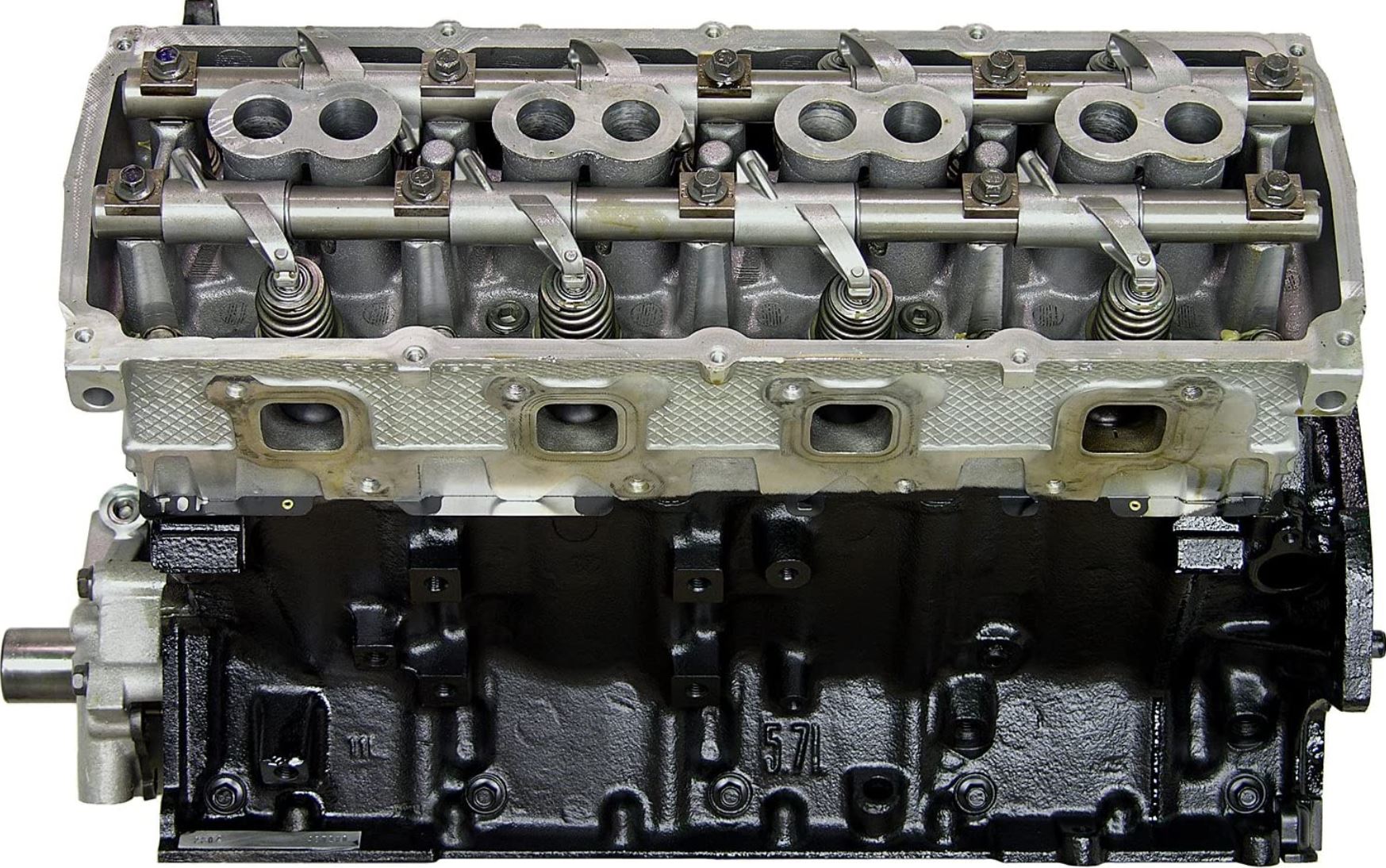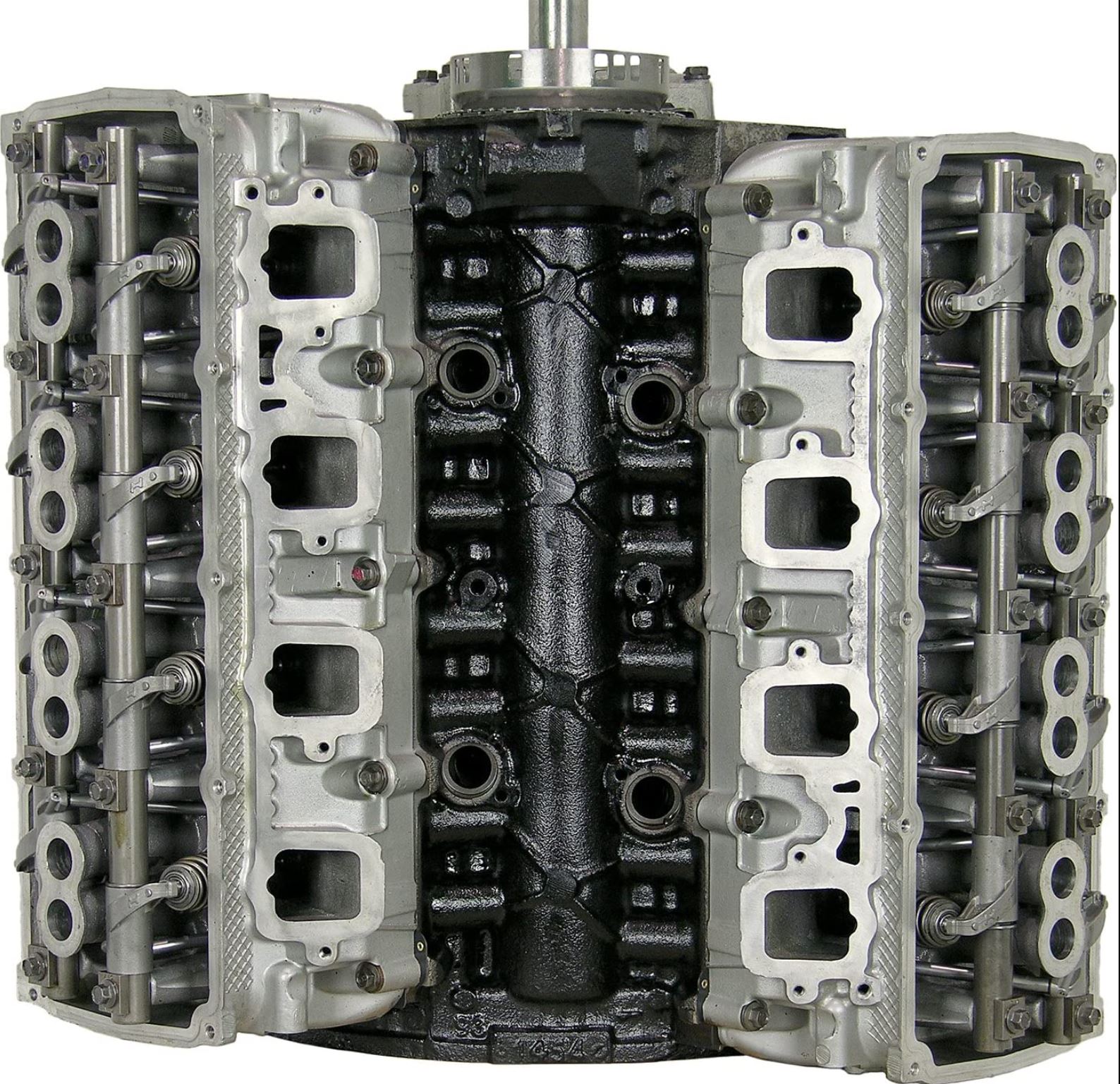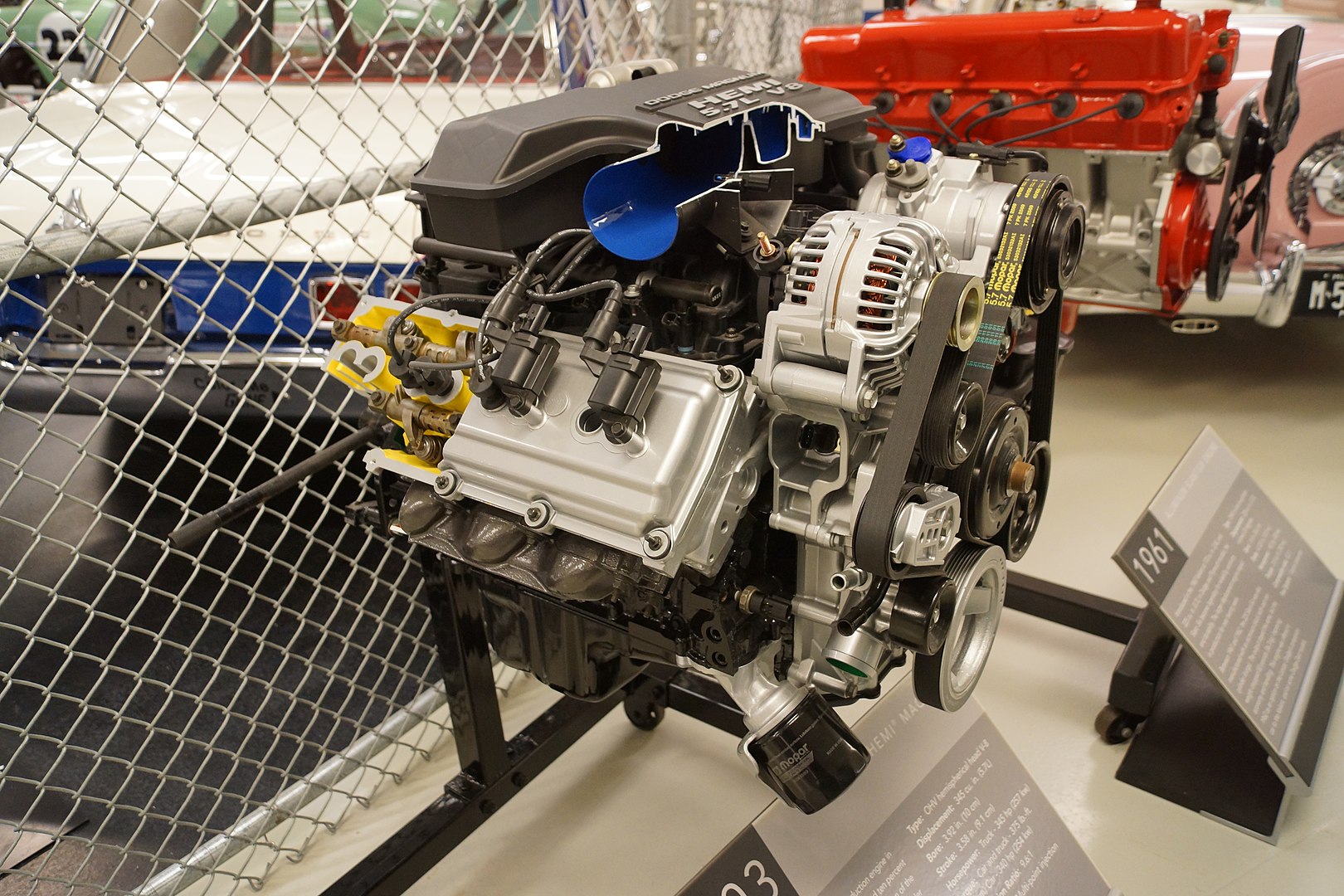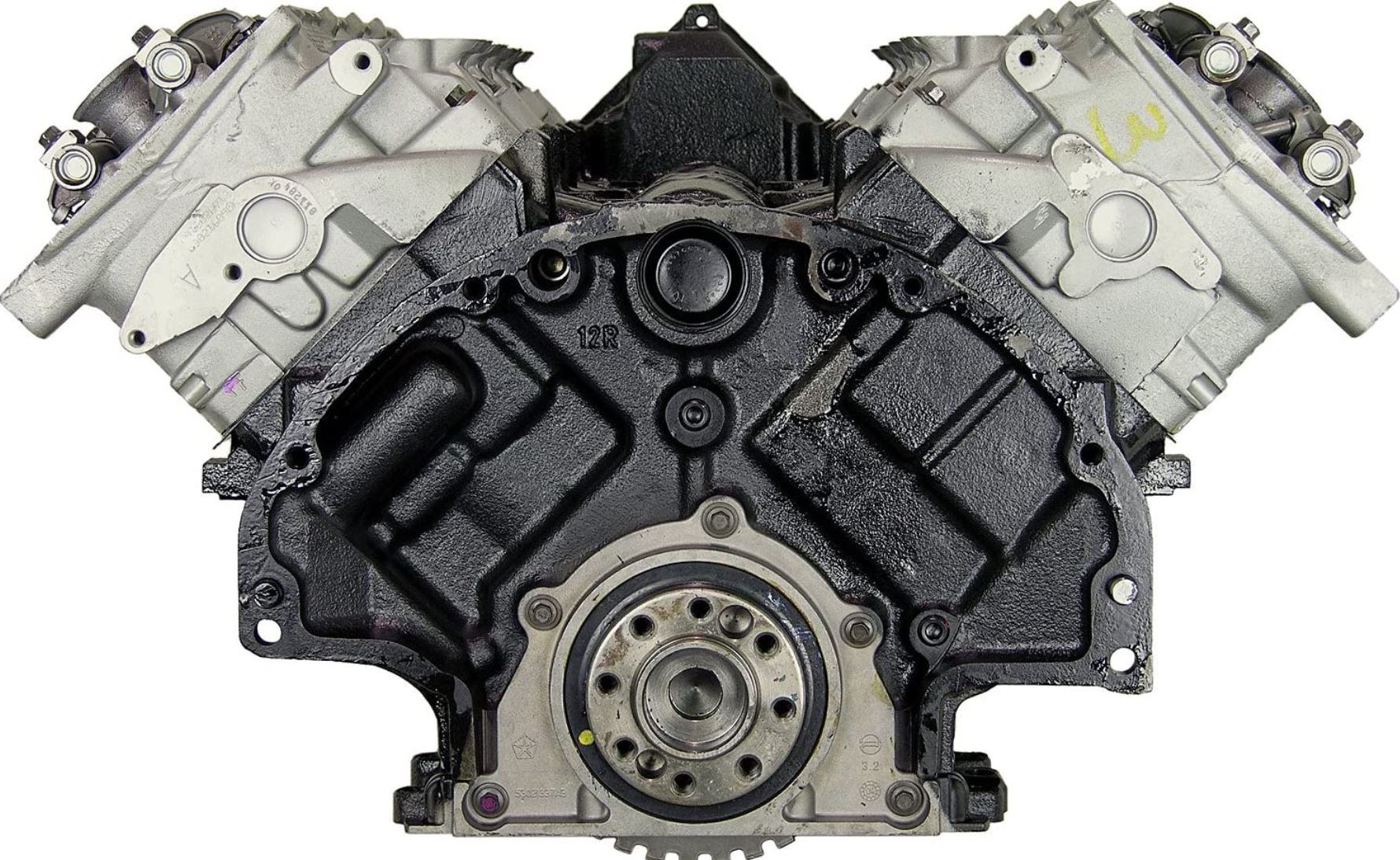The 5.7 Hemi V8 engine is a fantastic item of engineering from Chrysler. It’s powerful, long-lasting, delivers great HP+ torque, and handles the most difficult terrains with ease. Introduced in 2003, the excellent V8 engine is renowned worldwide.
However, the 5.7 Hemi has its own problems, flaws, and faults. This post will look at Common 5.7 Hemi Problems and their possible solutions in a little more detail below. But first things first, we’ll go over what this engine is about, its features, its 2009 update information, and its pros and cons.
What’s the Hemi 5.7L?
The Hemi 5.7 is a third-generation V8 Hemi engine from the Chrysler family. Produced to replace the previous Magnum 5.9l V8 engine model, it’s become the only gasoline engine available in the series. The Hemi 5.7 is a very popular engine due to its reliability and design features.
The Hemi 5.7l is one of the most in-demand hemispherical engine models with plenty of features. Its piston is round, unlike regular engines that have a flat top. Moreover, it has a narrower surface area, unlike other engines, delivering better heating and fuel burning performance.
Related read: What is the 5.7 Hemi Engine Logevity?
There have been numerous generations and versions of Hemi since 1951. But the Hemi 5.7l is the third generation Hemi engine that was introduced by Chrysler in 2002. Many SUV vehicles use the Hemi 5.7l engine, including:
- Dodge Magnum R/T
- Dodge Durango
- Dodge Charger R/T
- Dodge Challenger
- Chrysler 300C
- Ram Pickup
- Jeep Grand Cherokee
- 300S V8
- Jeep Wagoneer
Hemi 5.7 Upgrade (5.7 Eagle)
In 2009, the Hemi 5.7l received some upgrades, including improved cylinder head flow and a variable camshaft timing system for better performance.
Hemi 5.7L Pros and Cons
Here are the strong and weak points of the Hemi 5.7l:
Pros:
- Outstanding power output (410 lb-ft of torque and 395 horsepower)
- Double spark plug design (for eliminating emissions)
- Smaller than normal surface area
- Higher compression ratio and variable camshaft timing
- Multi-displaced architecture (increased fuel efficiency)
Cons:
- At best average airflow (can contribute to overheating)
- Large combustion chamber (likely to waste engine power)
7 Common HEMI 5.7L Problems
The Hemi 5.7l does come with a few common problems. They include Hemi tick, lifter roller issues, oil leaks, poor emission control, and misfires. Knowing what causes these engine problems will help you apply the right solutions.
- Overheating
- Misfires
- Lifter roller issues
- Engine tick
- Poor emission control
- Worn exhaust manifold bolts
- Oil leaks
Overheating
Overheating is a quite common issue among off-road-friendly trucks and SUVs. The Hemi 5.7l’s OEM air filter system is one of the engine’s weakest points. Once stretched to the limit by an off-road truck, it struggles to cool down the engine. This can eventually cause overheating.
The Hemi engine features only two valves per cylinder, which significantly decreases its filtration capacity. Besides, an idle engine is also likely to overheat in the summer.
Misfires
While misfires are a less common problem in the Hemi 5.7l, they’re still related to other common Hemi 5.7 issues. Misfires aren’t so much a problem but a symptom, so it’s best to identify them.
Hemi 5.7l engine misfires happen when the mixture of air and fuel isn’t burned sufficiently in the burning chamber. This causes the engine to lose power and jerk nonstop, dramatically increasing fuel consumption.
The most common cause of engine misfires is lack of maintenance. Lack of maintenance causes many components of the Hemi 5.7l engine to wear out, causing misfires from time to time.
But other factors may cause the Hemi 5.7l engine to misfire, including ignition coils, lifter rollers, faulty injectors, and other internal problems. Be sure to carry out proper maintenance on the regular and don’t wait for spark plugs to wear out before replacing them.
Lifter Roller Issues
Symptoms of lifter roller issues in the Hemi 5.7l engine include ticking, misfires, and check engine light. When you spot these symptoms, have your engine examined and fixed right away.
Lifter roller problems usually occur after 100,000 miles, but they sometimes pop up under 60,000 miles due to inadequate removal of roller lifter dirt and debris.
Lifter roller issues can be difficult to detect, so keep an eye out for these symptoms. Make sure to have your engine problems sorted out before they worsen.
Engine Tick
The Hemi 5.7 engine is prone to something known as the “Hemi tick.” The “ticking” sound problem is mainly caused by faulty filters, bad valves, worn exhaust manifold bolts, and low-quality fuel.
Now, some experts think you shouldn’t worry about the “Hemi tick” unless you continuously push the engine to the limit. However, since the Hemi 5.7 engine is quite expensive, it’s best to solve this issue at the very least.
Poor Emission Control
Every car has an emission control system, which plays an important role. It minimizes the toxic gases emitted by different components, including the engine.
In stressful situations, Hemi 5.7l’s dual spark plug feature is unable to control toxic gas emissions. The limited inbuilt piston gives up rather too easily.
At first, the Hemi 5.7l engine performed poorly when tested for emissions. However, the Hemi 5.7l engine was upgraded in 2009. Chrysler introduced the Hemi 5.7l Eagle to fix issues involving emissions, performance, and fuel economy.
Worn Out Exhaust Manifold Bolts
The first symptom of worn-out exhaust manifold bolts is a ticking noise. A wear-out leak is another symptom. If this problem worsens, it’ll most likely cause a loss of engine power.
The Hemi 5.7l’s exhaust manifolds are made with iron. During heating and cooling cycles, iron expands and contracts.
While expansion occurs naturally, the bolts may ultimately experience excessive tension. They’ll often stretch beyond their limit, which can lead to engine failure.
Oil Leaks
Oil leaks are another common issue in Hemi 5.7l engines. The leaks commonly occur on the front main seal, rear main seal, back of the transmission pan, valve covers, and under engine gaskets.
Oil leaks are often the result of an aging car or oil additives. They can also be caused by a timing cover seep or oil pump leak.
Possible Solutions to 5.7 Hemi Engine Issues
It can be very dispiriting for Hemi 5.7l engine owners to experience these common issues because this means costly repairs and maintenance. However, you can do the following things to prevent the occurrence of these problems.
Carry Out Regular Checkups
A check engine light can be a sign that your Hemi 5.7l engine has several problems, including a misfire that might cause more serious damage to your car or too much carbon in your engine. In addition, regularly check out the belt tension because it’s easy to overlook this part.
Carry Out Regular Oil Checks
Having a dirty engine can damage your vehicle’s system, so regularly check the color of the oil and its viscosity.
If you notice that the oil’s leaking or dirt particles in the oil, clean it up right away so it won’t cause serious problems in your car’s system. Also, consider using synthetic oil to ensure your engine stays clean.
Ensure the Fuel is Clean
Be sure to use clean or ethanol-free gasoline because this can extend your Hemi 5.7 engine’s life and prevent costly repairs in the future.
Change Spark Plugs
Ensure your vehicle’s spark plugs are changed earlier than usual or on time. This is because worn-out spark plugs can damage your engine’s parts, including valve stem seals and piston rings, potentially causing more serious problems. Also, check your spark plugs at least once yearly to ensure they’re working well.
Carry Out Regular Exhaust Check
A cracking or clunky sound on your car’s exhaust may mean there’s rust or dirt particles inside it. Be sure to clean your car’s exhaust regularly to avoid costly repairs in the future.
Know the Signs of Engine Efficiency Problems
If you notice that the engine performance of your car has dramatically dropped, have it examined immediately to prevent more serious problems and expensive repairs. If the issue still persists, get a qualified mechanic to check it out.
FAQs on Common 5.7 Hemi Problems
Question: When Did the Hemi 5.7l Engine Have Problems?
Answer: The Hemi 5.7 engine had issues in 2005. Many owners of the 2005 Dodge Magnum have said that the vehicle’s Hemi 5.7l engine stalls frequently after refueling. According to a February 2020 NHTSA report, this problem occurs each time the car’s fuel tank is filled to the brim with gas.
Question: How Long Does a Hemi 5.7L Engine Last?
Answer: If a Hemi 5.7l engine is well maintained, it can last up to 250,000-300,000 miles. Early models had valve seat problems that were fixed after 2008. Today, there are many high-mileage Hemi 5.7 trucks running around.
Question: What Are the Best Hemi 5.7 Engine Years?
Answer: The 2009 Hemi 5.7l is Hemi’s best-ever engine year. This is because the 2009 model received numerous updates, including a new touch of technology and major internal changes.
Question: Is the Hemi 5.7L Engine Reliable?
Answer: While no faultless engine exists, the Hemi 5.7 engine is very reliable for the most part. This engine has been in the market for almost 20 years, with the “Hemi tick” being its most common problem. The problem is caused by lifter-bearing failure.
Final Thoughts on Common 5.7 Hemi Problems
The Hemi 5.7l engine is a pretty reliable V8 engine, having been in use for almost 20 years. No wonder Jeep, Dodge, and Chrysler have been using it for that long.
Like any engine, however, the Hemi 5.7l is susceptible to several common design issues. The most common problem is the “Hemi tick” that can indicate lifter roller or lifter failure on the Hemi engine. The Hemi engine tick is a serious and costly issue once it happens.
Worn exhaust manifold bolts is another common Hemi 5.7 engine problem. It’s usually not a major problem, but it’s annoying because it can happen several times.
If your Chrysler, Dodge, or Jeep car experiences any of these problems, be sure to call in a professional mechanic to sort it out.
- Jeep Cherokee Bad Ground Symptoms - May 5, 2023
- Common 5.7 Hemi Problems and Their Solutions - August 18, 2022
- Jeep Grand Cherokee Years to Avoid - July 24, 2022






